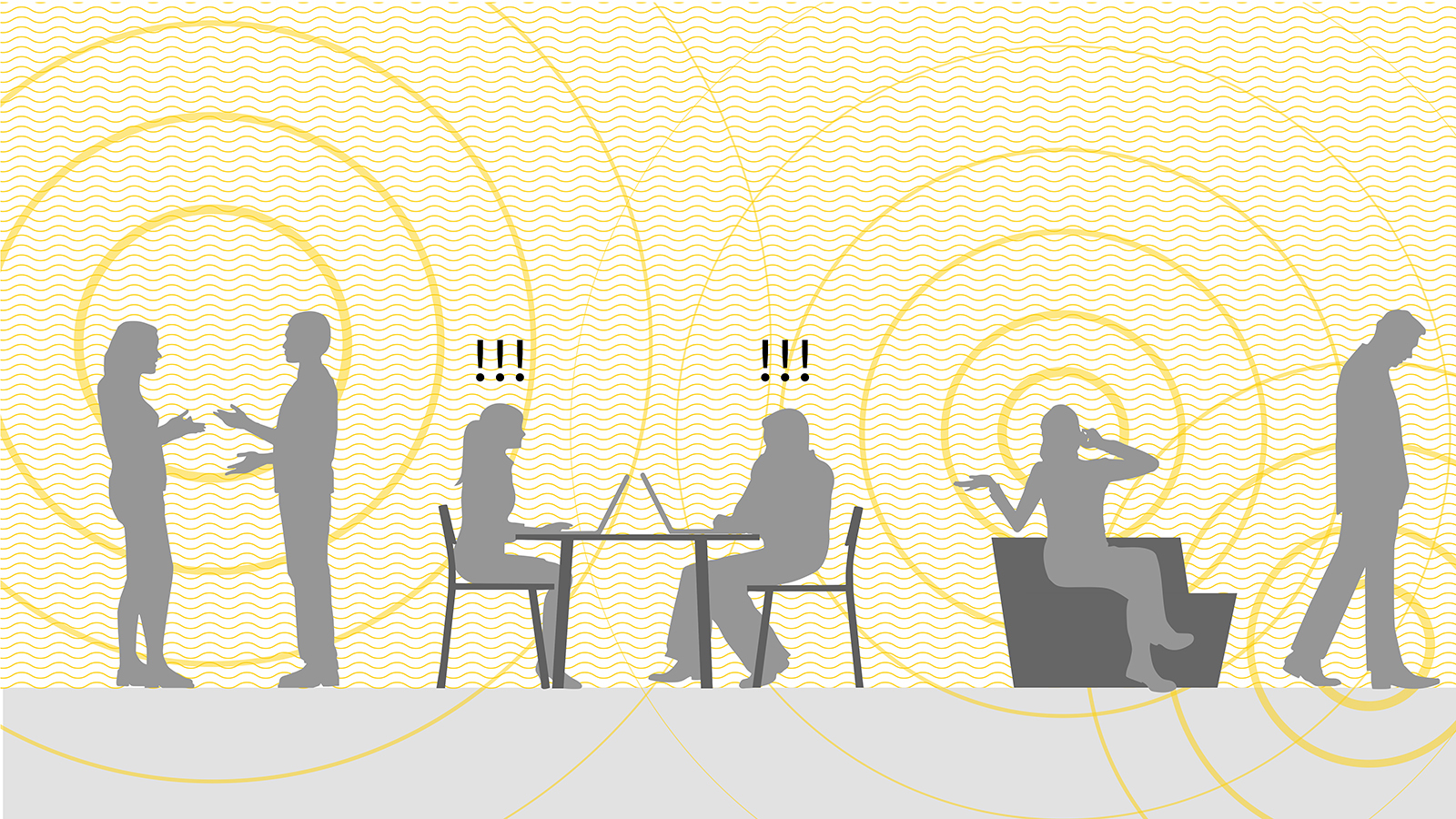Blair McKolskey examines ways to mitigate productivity-affecting disturbances.
The importance of collaboration
Research shows that collaboration is the most viable way to harvest the knowledge resident in our best companies. Increasingly this is taking place via less formal interactions.
Unplanned interactions amongst colleagues remain the ripe ground upon which teams can increasingly advance the company’s goals. Knowledge that is openly discussed in these unplanned interactions moves in a diffusion-style transfer from those who have it to those who want it.
Is noise harmful?
How many times per day do we overhear another conversation at work? Our ability to intercept a conversation and contribute enhances the productivity of teams by enabling results that would otherwise require formal process (research, meetings etc.). But consider this – this process of knowledge sharing may be valuable, but ironically it could also be harmful. Research shows that focused work remains more than 50% of our daily work life. So although the audibility of this knowledge transfer may be welcome to some, to others involved in focused work it will be more likely to be distracting.
According to a Basex study, office workers spend a quarter of their day consumed by interruptions and distractions – which wastes both time and money (Wallis, Steptoe, & Cole, 2006). This study reported that the ongoing splintering and diverting of worker attention was responsible for the loss of up to 2.1 hours of worker productivity per day. The hours lost included not only interruptions and distractions but also the time associated with recovering from distraction and getting back on task.
How does noise affect us?
Hearing is one of the most acute senses. The human ears are incredibly sensitive in the audible frequency range (20Hz to 20kHz). We are able to hear an incredibly broad range of sound. Our tolerance of noise differs from person to person and sensitivity can increase depending upon our mood, for example we may be less able to cope with loud noise when we are stressed.
In the office environment, sound can affect people in different ways. Studies have shown that exposure to noise can adversely affect our ability to concentrate and can also contribute to a build up of stress and frustration, reducing our overall tolerance levels. Greater than half of all office workers report being disturbed by conversations and other noise distractions in the workplace, yet some people are more irritated by such interruptions than others.
Introverts vs extroverts
Introverts differ in their perception of noise compared to extroverts, rating themselves as more “noise sensitive” and performing more poorly than other more extroverted subjects when tested in the presence of noise. While extroverts often enjoy working in the presence of music, introverts may tend to prefer quieter conditions. However both introverts and extroverts performed poorly under test conditions when affected adversely by noise. Most often people are more irritated and distracted by less necessary sounds, such as casual chit chat, than they are by routine and unavoidable sounds, such as tapping on keyboards.

Managing speech noise in the workplace
Speech is considered by most of those surveyed to be the most annoying and distracting type of office noise. This is also one of the most difficult types of noise to eliminate; it is human nature to seek to communicate, and open plan office environments are becoming more predominant. Therefore it is important to combat the negative effects that this can have in the workplace. How do we do this?
Strategies for managing noise
Different types of businesses require different workplace design strategies. Table 1, outlines a way to segment the way cognitive work is performed. In this example, for a legal firm the large proportion of work will be done in a focused manner with private/confidential collaborations. Contrast this with creative firms who thrive in open, energised collaborative spaces and perform a mix of focus/non-focus work. Each of these companies requires a different strategy to balance the work process with the acoustic requirements of the space. Here are some strategies that can be considered:
